Exploring the critical role of the engineer in contemporary art installations with Michael O’Sullivan, Design Manager at QAGOMA and Paul Callum, Director of Brisbane engineering firm, Bligh Tanner.
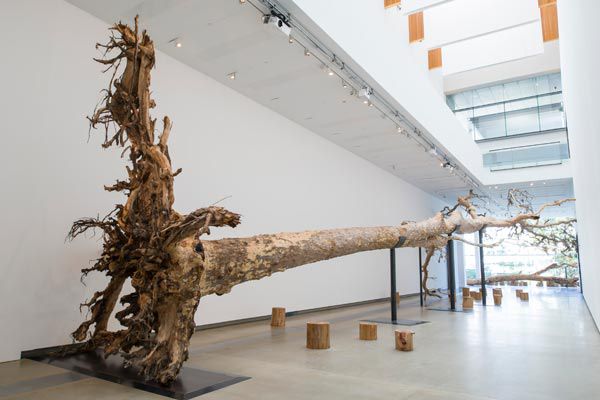
April 14th, 2015
How important is the role of the engineer in exhibition installations?
Michael:
The engineer’s role is essential for many of the large contemporary art installations that QAGOMA is renowned for. The contemporary artists that we work with are constantly testing the limits of the building and their own practice, working with the large volumes of space the Gallery can offer, particularly in GOMA. Critical for us in working with an engineer is that they have a sense of what the artist wants to achieve. Not every consultant understands the importance of the vision and aesthetic that the artist is looking for, or the display/engineering solutions to do that effectively. Bligh Tanner has been very helpful to us over the years as they really take the time to understand the needs and desires of the artist. With every art installation we also have to ensure the safety of the public, accessibility, minimising the permanent impact on the building, and longevity of the artwork.
Paul:
The role of the engineer is very important and varies dependent on what stage we become involved in exhibition installations. Sometimes we get involved with the Gallery when the artistic design is reasonably complete because the installation may have been established many years ago and is being relocated to/temporarily exhibited at the gallery for example ‘Falling Back to Earth’. In this case we have to develop solutions that satisfy the pre-existing artistic intent and will work within the gallery space. Other times the artwork may have been commissioned directly by the Gallery and so is designed with a particular space in mind such as Ressort. In the former case the limitations in form are pretty inflexible while for the latter, we often participate in the process during the later stages of the design itself.
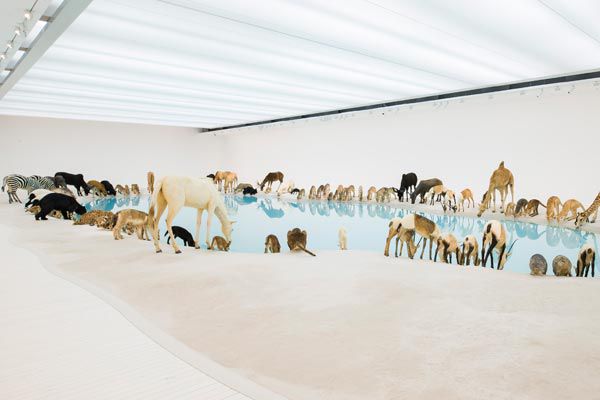
How important is the collaborative relationship between the engineer, the exhibition design team and artists in bringing artistic visions to life?
Michael:
Often it takes considerable time, patience and perseverance to resolve design and engineering solutions that will satisfy an artist’s brief. There is sometimes a tension between what the artist wants to achieve and what the building can support – we therefore require creative thinking to achieve the artist’s vision, which is where we’ve had to rely heavily on Bligh Tanner to come up with innovative solutions.
Each discipline potentially works in different ways:
-Artist – intuitive, spontaneous, adventurous, creative, personal
-Designer – aware of spatial context and how to shape audience experience
-Engineer – Quantitative and definitive
On major projects each has an essential role to play and respects and complements the others to achieve great outcomes. Collaborative relationships are essential in this regard.
Paul:
Absolutely critical. For some installations the form of the piece is very dependent on structural engineering limitations of the piece itself such as The Horn of Africa, while for others, especially larger pieces, the limitation is more associated with environment such as floor or roof load or dimensional capacity as was the case with the ‘Falling Back to Earth’ pieces. The role of the structural engineer is to advise, obviously, on the environmental limitations but this is only half the job. The remainder is to also contribute to the creative aspect and advise on the possibilities in achieving the aesthetic intent of the artist, especially if the artist is sacrificing their ideal due to perceived engineering limitations. We can often overcome such issues if we have an understanding of the artist’s or exhibition designer’s intent in addition to our knowledge of the environmental issues.
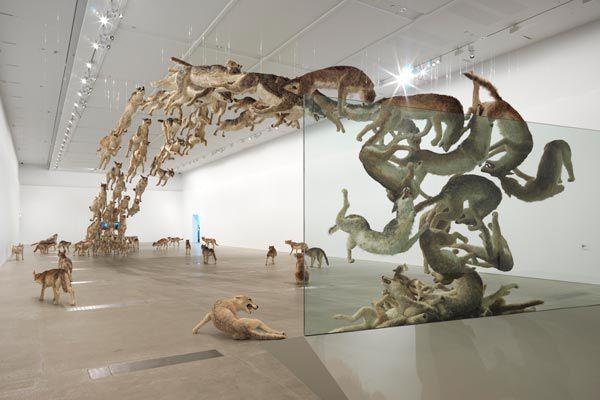
What are some of the major challenges you’ve had to overcome/often encounter?
Michael:
The ‘Cai Guo-Qiang: Falling Back to Earth’ installation certainly had its challenges. We had to transplant a whole tree and reconstruct it in the gallery space as well as build a giant lake– it was certainly out of the box as far as conventional structural engineering goes.
As an exhibition designer, the main challenges I face include:
-Designing to facilitate meaningful and transformative experiences between audiences and art
-Translate curatorial briefs into arrangements of space that allow artworks to be experienced individually and collectively
-Resolve practical display issues to ensure art is displayed safely and effectively
-Work with multidisciplinary teams within limited timeframe and budget
-Working with living artists and addressing their wants/ needs/ desires relative to the resources we have available
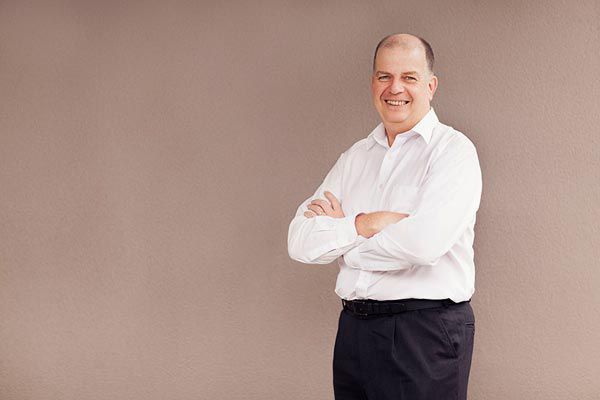
Paul Callum
Paul:
Certainly getting the 30 metre long 15 tonne Spotted Gum from Springfield into the GOMA exhibition space for the ‘Cai Guo-Qiang: Falling Back to Earth’ installation was interesting. The tree was over a kilometre into a forest and its retrieval and transport was over high level, major in ground infrastructure (water supply pipes), which required steel plate bridging along its length. Then of course manipulating the tree into the gallery required it to be cut into three lengths that then had to be ‘hidden’ – stitched back together to appear as a single length tree. The QAGOMA staff did an amazing job with the reuse of tree bark patterning over the cuts.
Another installation, Ressort by Huang Yong Ping, required a convoluted consultation process with a Chinese artist based in Paris, the manufacturer based in China, an interpreter in Adelaide, and QAGOMA staff and myself in Brisbane. Many installations are of a very random form and certainly a 53 metre long, 10 tonne snake skeleton fits that description. The use of 3D modelling was extremely valuable in this project and certainly in many others. It allows not only excellent analysis but also an excellent way for all parties to review and visualise progress.
‘Installation Art’ is nearly always 3D and by its very nature is bespoke. Every project therefore has significant limitations that don’t apply to the same degree in building engineering. These limitations include material type, member size, member location, secret connections and detailing, minimal orthogonality (random edges and shapes). Every project presents new challenges and requires aligning the engineering solution to the creative intent. Often in building works there can be an “us and them” competitive approach for recognition of importance. Does the aesthetic give way for simplicity, durability, functionality or cost? It can depend on your perspective. With art there is no functional necessity, and simplicity and durability are not necessarily relevant. Cost obviously comes into it as money is a limited resource…creativity however, is not.
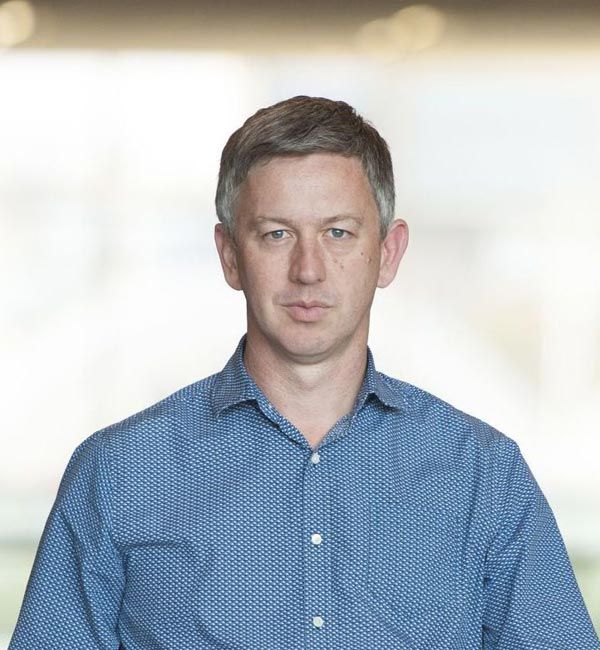
Michael O’Sullivan
QAGOMA
qagoma.qld.gov.au
Bligh Tanner
blightanner.com.au
INDESIGN is on instagram
Follow @indesignlive
A searchable and comprehensive guide for specifying leading products and their suppliers
Keep up to date with the latest and greatest from our industry BFF's!

Sydney’s newest design concept store, HOW WE LIVE, explores the overlap between home and workplace – with a Surry Hills pop-up from Friday 28th November.

For those who appreciate form as much as function, Gaggenau’s latest induction innovation delivers sculpted precision and effortless flexibility, disappearing seamlessly into the surface when not in use.
BrandCulture create a visual narrative of Sydney Water’s history in the company’s Parramatta head office.

The modern hotel experience is not what it used to be. Design, ergonomics and lived experiences inform all aspects of hotels, with everything from check-in to the pillows you sleep on driving a human-centric model of hospitality. With the help of Designer Rugs, we find out more.
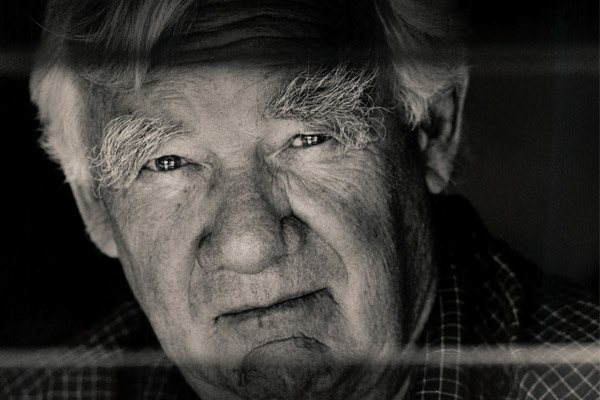
In the mid-1960s, he was the first Australian architect to achieve a high level of international recognition, especially in North America where he was seen as an American architect working in the then fashionable ‘brutalist’ style. But John Andrews has at times been less comfortable in Australia where several signature buildings have been treated with less respect than they deserve. Indesign thought it time to celebrate one of the icons of Australian architecture.
The internet never sleeps! Here's the stuff you might have missed

Making a splash on the hair spa scene, the latest project from X + O makes a little slice of Japan right at home in suburban Melbourne.
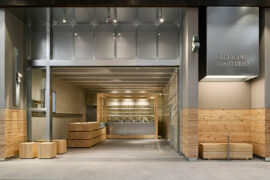
Hecker Guthrie brings a natural, material-led design to Green Cup’s new Chadstone store, pairing pine, steel and glass with a grab-and-go layout inspired by the brand’s fresh, organic ethos.
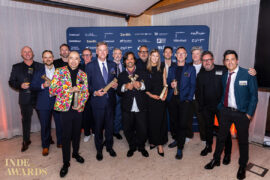
With the opening of the 2026 INDE.Awards program, now is the time to assess your projects, ensure photography is at hand and begin your submissions.
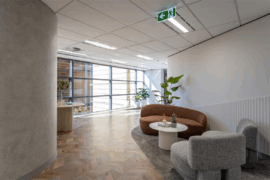
A thoughtful, low-waste redesign by PMG Group in collaboration with Goodman has transformed a dated office into a calm, contemporary workspace featuring a coastal-inspired palette and Milliken flooring for a refined finish.